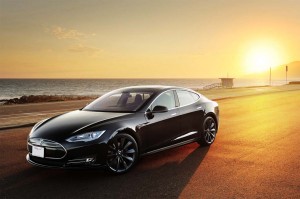
Investors seem to be ready to overlook the issues surrounding the Model S, but NHTSA is definitely not.
Investors appeared to be willing to overlook the recent Tesla Model S fires yesterday, pushing the company’s stock to its biggest one-day gain in four months; conversely, the National Highway Traffic Safety Administration (NHTSA) is taking time to really examine the incidents and the safety of the Model S.
Tesla’s stock jumped 16.5% yesterday on a couple of pieces of good news. First, the German Federal Motor Transport Authority – Germany’s version of NHTSA – basically cleared Tesla of any culpability in the three incidents where the Model S caught on fire: two in the United States and one in Mexico.
“No manufacturer-related defects could be found,” according to a letter outlining the findings from the German agency, which was provided by Palo Alto, Calif.-based Tesla. “Therefore, no further measures under the German Product Safety Act are deemed necessary.”
Additionally some Wall Street analysts believe the incidents aren’t going to hurt Tesla in the long term.
“We believe negative news flow on Model S fires, while clearly disruptive to the stock’s momentum, will not cause material damage to the business,” according to a research report from Adam Jonas, a Morgan Stanley analyst in New York.
In fact, some pushed the stock back into “buy” status, and apparently investors did as the stock closed yesterday at $144.70, up $20.53 from Monday’s close.
(EV sales hampered by price as much as range anxiety. For more, Click Here.)
However, the stock has fallen back to the $141 to $142 range in early trading today. Part of that slide might be attributable to the fact that despite German transportation safety officials absolving Tesla of blame, NHTSA has most definitely not.
(Click Here to see the latest happenings between Tesla and NHTSA.)
The agency recently opened an investigation into the two fires in the U.S.: one in Seattle and one in Nashville. In a letter from D. Scott Yon, NHTSA’s chief of the vehicle integrity division, late last month, the agency asked for specific information, including:
- “Describe in detail all possible consequences to the vehicle from an impact to the subject component that damages the battery.”
- “Describe in detail how these possible consequences were addressed in the design of the (Model S) and the limits of that design to prevent damage to the propulsion battery, stalling and fires.”
NHTSA wants the results of all tests, surveys, simulations and other Tesla efforts to review the battery fires and the alleged defect. It also wants:
- to know it any changes were made to address the possible defect;
- any communication to owners or regional officers that the company is planning to issue during the next four months; and
- any planned changes to the Model S to address the issue.
In spite of all these questions being asked publicly by NHTSA – all of the queries were posted on the agency’s website, as they always are – Tesla’s CEO Elon Musk took to Twitter.
“German govt reviews Tesla Model S fires,” Musk said in a Twitter post on Dec. 2. “All due to high speed impacts, no injuries. Concludes: no defects, no recall.”
That said, last month, Tesla began taking steps to allay concerns about the Model S. Musk wrote in a blog post that Tesla is “amending our warranty policy to cover damage due to a fire, even if due to driver error.” The company has said it is working to improve the clearance between the bottom of the car to reduce impacts with debris. Software updates will cause the air suspension to create greater ground clearance at highway speeds.

Manufacturing defects and DESIGN defects are two seperate entities. If the design is defective and it may very well be, then Tesla has big problems and liability issues.